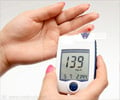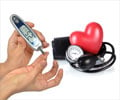Scientists at the Georgia Institute of Technology have designed a painless patch that may someday make hypodermic needles as well as annual flu shots a thing of the past.
These patches, lined with tiny 'microneedles,' could make treatment of diabetes and a wide range of other diseases safer, more effective and less painful, according to the researchers.Used as tiny hypodermic needles, they could improve treatment of macular degeneration and other diseases of the eye.
"It's our goal to get rid of the need for hypodermic needles in many cases and replace them with a patch that can be painlessly and simply applied by a patient," said Mark Prausnitz from the Georgia Institute of Technology.
"If you can move to something that's as easy to apply as a band-aid, you've now opened the door for people to self-administer their medicine without special training," he added.
Prausnitz said that advances in the electronics industry in microfabricating very small objects like transistors enabled the development of microneedles.
"We've built off those technological advances to address a need in medicine. We're trying to bring the two worlds together," he said.
Advertisement
Prausnitz and his colleagues suggest that the microneedle patch could, for instance, replace yearly trips to the doctor for flu shots.
Advertisement
After exposing the mice to the flu, they compared the resulting immune response and antibody levels. They found that the antibody levels were the same by either route.
Taking a closer look, they discovered that microneedle delivery resulted in a better protective immune response by other measures.
"Toward the goal of a flu vaccine patch, we are continuing the animal studies, but we're also working toward our first human trial, which we hope to do in 2010," Prausnitz said.
Microneedles are not just able to deliver drugs through the skin they can also be used for targeted drug delivery in the eye.
They may help create an improved treatment for macular degeneration.
The study has been presented at the 238th National Meeting of the American Chemical Society.
Source-ANI
LIN














